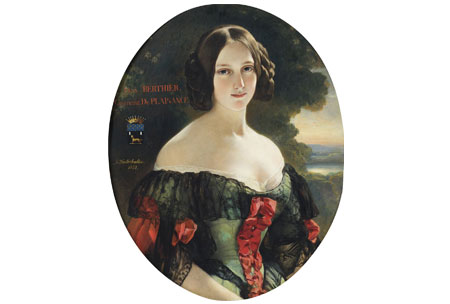
Villa Pliniana was built in 1573 on the outer walls of a pre-existing but rather more modest structure. It is likely that the original site housed some mills and buildings for spinning wool.
We are in Torno, on the road from Como to Bellagio. The villa was built for Count Giovanni Anguissola, then Governor of Como.
The villa is situated on an inlet on the lake and takes its name from Pliny the Younger who wrote of its intermittent karst spring in a letter to his friend Lucius Licinius Sura. ““There is a spring which rises in the mountain, and running among the rocks is received into a little banqueting‐room, from whence, after being detained a short time, it falls into the Larian lake. The nature of this spring is very surprising: it ebbs and flows by regular amounts three times a day. Perhaps there may be a hidden air current which opens and closes the channels of the spring (...) Perhaps the intermittence is due to a subterranean wind or perhaps an ebb and flow in the spring, such as the high and low tides in the sea. This increase and decrease can be plainly observed and under very delightful conditions. You recline by the side of the fountain, and whilst you are taking a repast and drinking its water too, for it is extremely cool, you see it rise and fall by fixed and measured gradations.
Fron a height of 80 metres above the spring plunges a waterfall described by Leonardo da Vinci in the Codex Leicester. Construction of the villa was supervised by the architect Giovanni Antonio Piotti and work was finished in 1577. It was subsequently sold in 1590 to Pirro I Visconti Borromeo who built the terraces on the surrounding lands, planting grapevines and sweet chestnut trees. It then passed to Francesco Canarisi of Torno who frescoed the interiors and added portraits of his ancestors, Pliny the Younger and Pliny the Elder and a chapel in honour of Saint Francis. The Canarisi family owned it until the turn of the nineteenth century. The villa passed from one owner to another until 1840 when the new proprietor Prince Emilio Barbiano di Belgiojoso d'Este undertook a complete redecoration of the interiors. In 1890 the villa was purchased by the Valperga di Masino family who brought here the furnishings of the castle of Masino.
Many were the famous names that sojourned here: sovereigns, musicians, scientists, poets and writers. Among these were Napoleon, Joseph II, Francis I and Queen Margherita of Savoy, Alessandro Volta, Lazzaro Spallanzani, Franz Liszt, Gioachino Rossini, Vincenzo Bellini, Giacomo Puccini, Stendhal, Shelley, George Gordon Byron, Ugo Foscolo, Berchet, Alessandro Manzoni and Antonio Fogazzaro, who found inspiration here for his novel Malombra.
In 1983 Emilio Ottolenghi, an entrepreneur from Turin, bought the villa and undertook a painstaking historical restoration. The front of the main building overlooks the lake with four rows of windows. In the centre there is a loggia with three arches while to the rear, behind a statue of Neptune with trident, there is a courtyard enclosing the spring.
The villa, isolated and austere, has inspired many a mysterious legend. It is said to be haunted, perhaps by the ghost of the first owner Giovanni Anguissola, a military commander who was assassinated. Or perhaps the ghosts are the restless souls of Anguissola’s own victims.
The legend however is connected to the adulterous love story of Emilio Barbiano di Belgiojoso and Princess Anne-Marie Berthier (daughter if Marshal Berthier , Chief of Staff to Napoleon).

Anne Marie fled Paris, leaving her husband the Duke of Plaisance da Bonaparte and her infant daughter. The lovers took refuge here and remained in total isolation for eight years. They lived purely for pleasure, immersed in surroundings of “sepulchral, lofty cypresses".
This is what was written about them: “At night, as the clock struck midnight, they would wrap themselves naked in a bed sheet and dive into the lake from the top of the loggia, as if seeking ease from the fever of love which bound them. The townsfolk on the opposite shore were frightened by what they thought was a ghost. The daily repetition of the event only confirmed their belief. Rumour got about that every day, at exactly midnight, a ghost – perhaps that of Anguissola or that of the governor’s victim, the Duke of Piacenza – plummeted head first into the lake.”